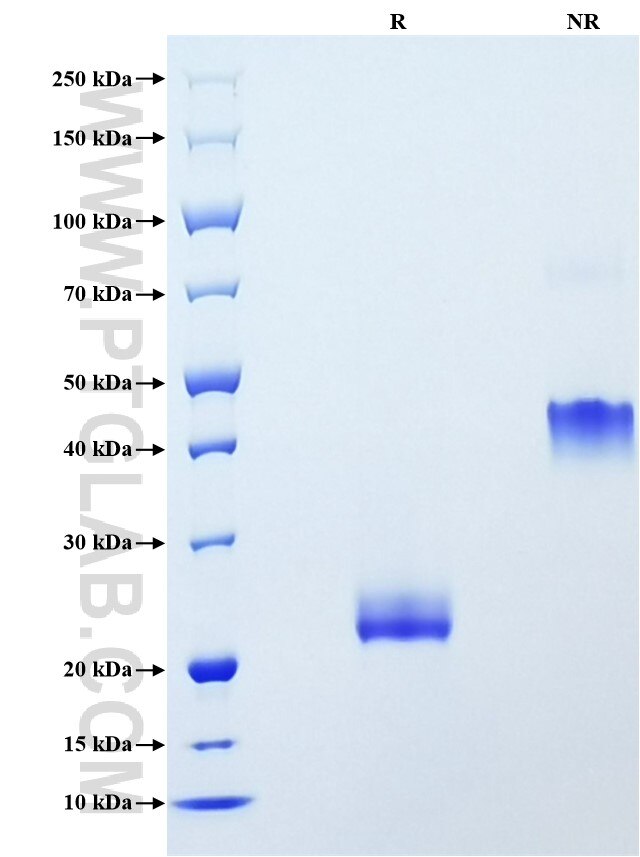Recombinant Mouse VEGFA protein (His Tag)
Species
Mouse
Purity
>90 %, SDS-PAGE
Tag
His Tag
Activity
not tested
Cat no : Eg0277
Validation Data Gallery
Product Information
| Purity | >90 %, SDS-PAGE |
| Endotoxin | <0.1 EU/μg protein, LAL method |
| Activity |
Not tested |
| Expression | HEK293-derived Mouse VEGFA protein Ala27-Arg190 (Accession# Q00731-2) with a His tag at the N-terminus. |
| GeneID | 22339 |
| Accession | Q00731-2 |
| PredictedSize | 20.1 kDa |
| SDS-PAGE | 22-26 kDa, reducing (R) conditions |
| Formulation | Lyophilized from 0.22 μm filtered solution in PBS, pH 7.4. Normally 5% trehalose and 5% mannitol are added as protectants before lyophilization. |
| Reconstitution | Briefly centrifuge the tube before opening. Reconstitute at 0.1-0.5 mg/mL in sterile water. |
| Storage Conditions |
It is recommended that the protein be aliquoted for optimal storage. Avoid repeated freeze-thaw cycles.
|
| Shipping | The product is shipped at ambient temperature. Upon receipt, store it immediately at the recommended temperature. |
Background
VEGFA, also named as VEGF or VPF, belongs to the PDGF/VEGF growth factor family. It is a growth factor active in angiogenesis, vasculogenesis and endothelial cell growth. VEGFA induces endothelial cell proliferation, promotes cell migration, inhibits apoptosis and induces permeabilization of blood vessels. It binds to the FLT1/VEGFR1 and KDR/VEGFR2 receptors, heparan sulfate and heparin. Defects in VEGFA are associated with microvascular complications of diabetes type 1 (MVCD1). Alternately spliced isoforms of 121, 145, 148, 165, 183, 189, and 206 amino acids (aa) have been identified in humans, with 120, 144, 164 and 188 aa isoforms found in rat and mouse.
References:
1. Conn, G. et al. (1990) J. Biol. Chem. 87:2628. 2. Ishii, H. et al. (2001) Arch. Oral Biol. 46:77. 3. Byrne, A.M. et al. (2005) J. Cell. Mol. Med. 9:777. 4. Robinson, C.J. and Stringer, S.E. (2001) J. Cell. Sci. 114:853.

